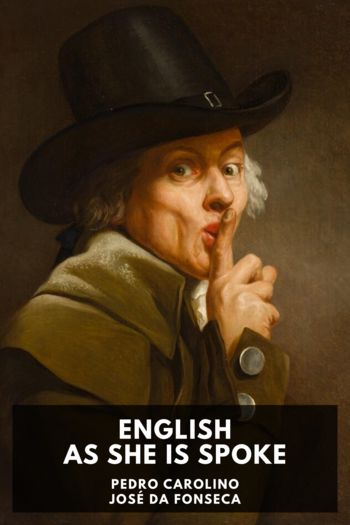Pablo de Segovia, the Spanish Sharper, Francisco de Quevedo [primary phonics .txt] 📗

- Author: Francisco de Quevedo
Book online «Pablo de Segovia, the Spanish Sharper, Francisco de Quevedo [primary phonics .txt] 📗». Author Francisco de Quevedo
Don Pablo de Segovia was first published in 1626, at Saragossa, and had a great success, several editions being called for before the author’s death. There is reason to believe that it was written some years before, being probably circulated in manuscript among the author’s friends before being printed, as was the custom of the time. In 1624 Quevedo had been lately released from the first of his imprisonments at Torre de San Juan Abad, and had partially recovered the favour of the Court. It was a period when the printers were most busy with his works—when satires, political apologues, religious tracts, visions, burlesque and piquant odes, fantasies, and calls to devotion were being poured forth abundantly out of his fruitful brain. Señor Guerra y Orbe believes that Don Pablo was written in 1608. That it was composed before 1624 is proved, I think, by the character of the book, which is certainly more juvenile than belongs to a man of forty-six, as well as by a piece of evidence to be found within. In chapter VIII, when on the road to Torrejón, Don Pablo comes up with a crazy man mounted on a mule, who proves to be a master of the art of fencing, with several extravagant projects in his brain for the good of the kingdom. Among these he has two schemes to propose to the king for the reduction of Ostend. Now the great siege of Ostend, which is doubtless the one referred to, was that which ended, after three years’ fighting in which an extraordinary number were slain on both sides, in September, 1604. It is a reasonable conjecture, therefore, that Don Pablo, at least as far as chapter VIII, was written prior to this date. The chapters in which the students’ adventures at Alcalá are described seem to me also to bear internal evidence of having been written when the impression of university life was still fresh upon the author. This theory of the date of Don Pablo makes the author a young man of twenty-three when the book was composed; and the book itself the third, in order of time, of the picaresque romances, following closely after Guzman de Alfarache.
Don Pablo de Segovia has been always popular in its native country, and has been frequently translated into other languages. Señor Guerra y Orbe notes more than forty editions of the original in Spain and in the Spanish dominions. An Italian translation, by Juan Pedro Franco, appeared in 1634 at Venice. A French version, by Geneste, was included among the burlesque works of Quevedo, translated into that language in 1641. Other early French versions are those of Lyons and of Brussels. In 1842 M. Germond de Lavigne brought out his translation of Don Pablo which is spirited and readable, but a good deal changed from the original. Portions of other works by Quevedo are inserted in the text, a prologue borrowed from the Hora de Todos, and a conclusion added from out of the manufactory of





Comments (0)